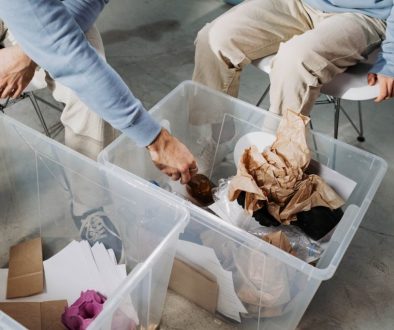Plasterboard is a drywall material that is used to create walls and ceilings. It is made of a gypsum core covered in paper or fibreglass. Plasterboard is a popular construction material because it is versatile and easy to install.
However, a downside of using plasterboard is the difficulty in disposing of the material after use. Unlike other construction materials, plasterboard can’t simply be disposed of by loading it into a skip, but why is this? Here is everything you need to know about plasterboard, and why it is a potential hazard.
1. High Sulphate Levels
The dangers of plasterboard to the environment are often overlooked. Plasterboard contains high levels of sulphates, which can be harmful to the environment. When disposed of in a landfill, these sulphates can leach into the ground and contaminate water sources.
Incorrect disposal can lead to several problems, including the contamination of drinking water. In addition, the sulphates can also damage plant life and wildlife. As a result, recycling the material is one of the most effective ways to dispose of it.
2. Corrosive Compound
As plasterboard is manufactured with a gypsum-based core, it is prone to the effects of water. Should it come into contact with water, it can produce hydrogen sulphide, which is a toxic gas that can build up and cause acid rain.
If plasterboard is disposed of by simply being thrown into a skip, it may be exposed to water, causing the production of hydrogen sulphide, therefore it should always be disposed of carefully and correctly.
3. Terrible Odour
When water comes into contact with plasterboard, the gypsum core can dissolve and produce hydrogen sulphide gas, which has a terrible odour. The odour may be unpleasant for people who are near the area where the plasterboard is located. It can smell like rotten eggs, which is not a great odour, even from afar.
Best Practices in Disposing Of Plasterboards
Plasterboard is a hazardous waste material. People should never allow it to mix with other materials or chemicals. Therefore, it should not be disposed of in the same way as any other construction waste. If you have to dispose of plasterboard, you should follow some best practices.
1. Separate from Other Waste
People should separate plasterboard from other waste as they should not mix it in with other rubbish. This type of waste separation is good practice, and essential to reduce pollution and environmental damage.
2. Abide by Local Regulations
Your area may have local regulations on how to dispose of plasterboard, as you can not usually dispose of it with your other construction waste. It is always a good idea to check with your local authority recycling centre, or with a professional waste management company to be sure.
3. Recycle
Plasterboard can be recycled and used again. The recycling process starts with the collection of used plasterboard from construction sites. The collected plasterboard is then transported to a recycling facility.
At the recycling facility, the plasterboard is crushed into small pieces. The small pieces are then cleaned and sorted according to their composition. The sorted plasterboard is then used to make other products.
4. Hire Authorised Carriers
When transporting plasterboard, it is a good idea to use a professionally trained and authorised carrier. Authorised carriers are specially trained to handle and transport plasterboard, and they have the necessary equipment to transport plasterboard safely.
Authorised carriers have sufficient knowledge and training in handling harmful materials. People would not have to subject themselves to danger as someone else would do it for them.
Gypsum Disposal in the UK
The Environment Agency, a non-government organisation, called to action the need to regulate the materials people can dump in landfills, including materials made out of gypsum. The request is about a law passed in England and Wales in 2005, disallowing gypsum and high sulphate-bearing wastes to mix with biodegradable waste.
Until 2009, the said agency gathered data and sufficient information to create a working guideline for the law. However, they found that only ten per cent of construction materials contain gypsum and sulphates, which means they are not directly harmful to people. Therefore, the motion to have separate landfills for biodegradable and construction materials stopped.
Conclusion
Despite being one of the popular construction materials, plasterboard also contains harmful chemicals which can harm people if not disposed of properly. When demolishing buildings or undertaking other construction projects that involve plasterboard, it is essential to take care in disposing of the material.
Plasterboard can release harmful chemicals into the air and water, which can cause respiratory problems, skin irritation, and other health problems. There are a few ways to dispose of plasterboard properly. But whichever method you choose, it is essential to take care in disposing of plasterboard to prevent harmful chemicals from harming people or the environment.
Enviro Skip Hire provides skips for hire in Sandbach and other services to help clients manage their waste disposal. Our skips range from domestic, large-sized, enclosed, and roll-on or off types to match various purposes. Manage your waste disposal better today, and hire skips on our website.




